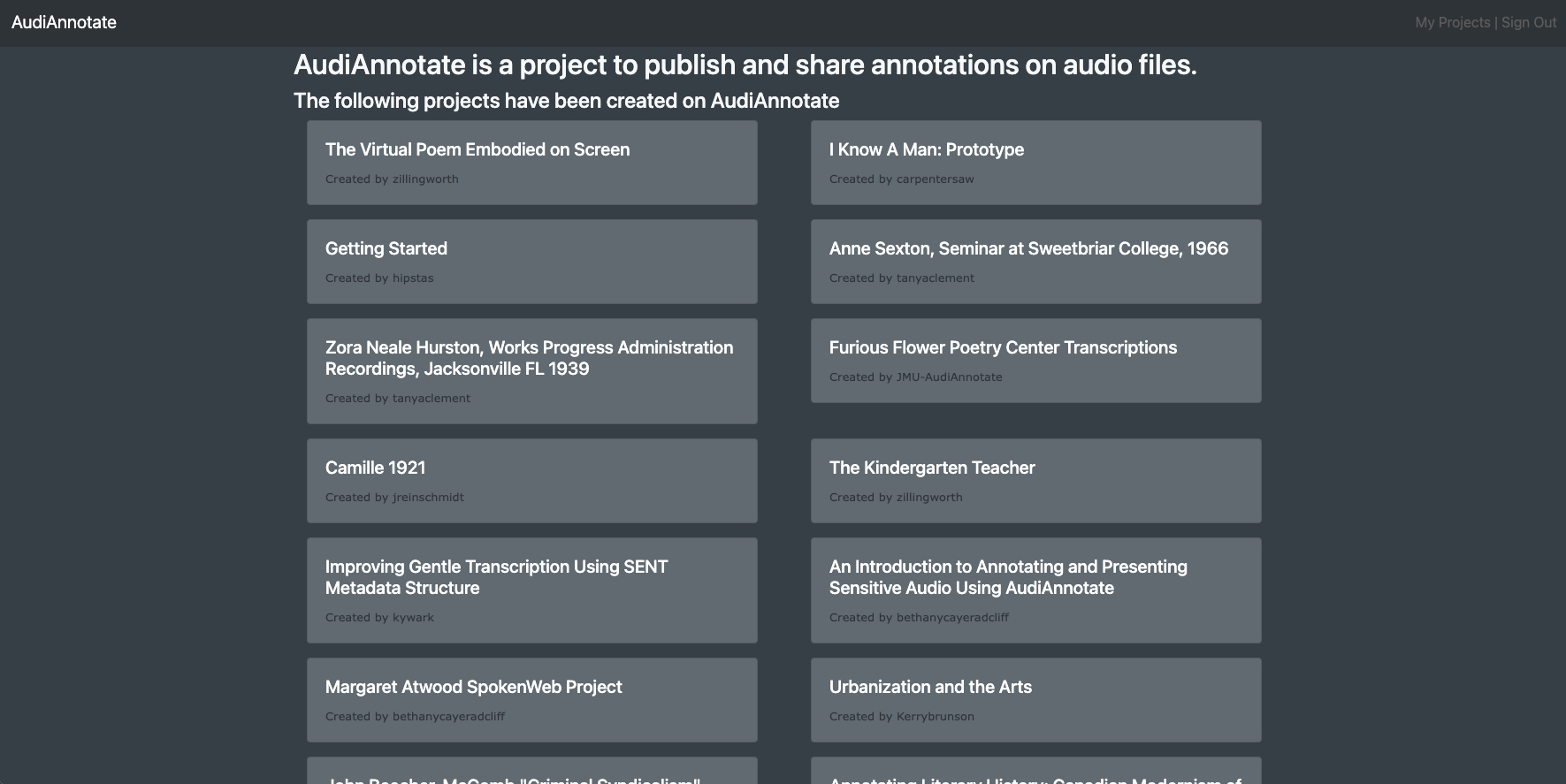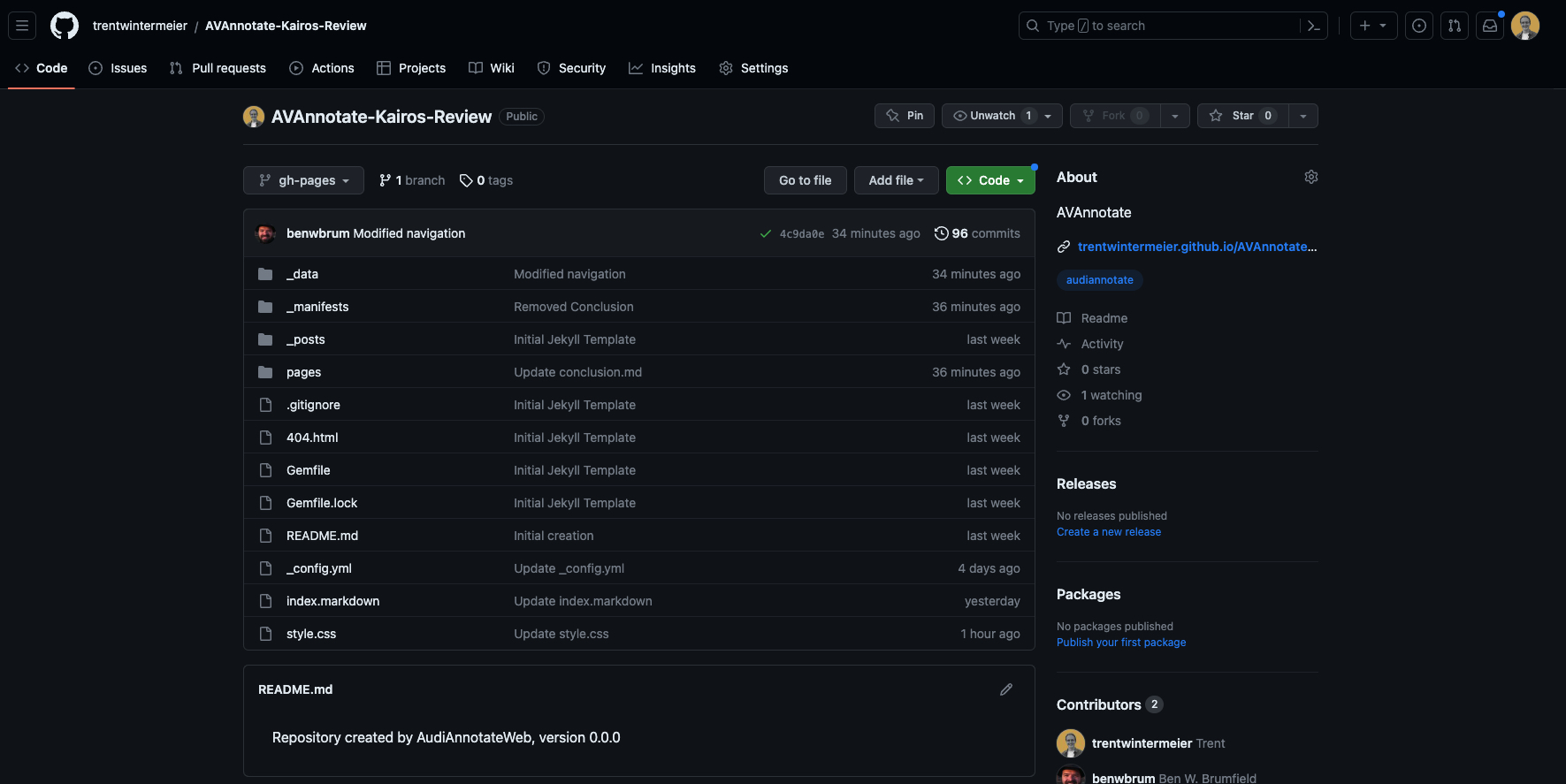Infrastructure
| Time | Annotation | Layer |
|---|---|---|
| 0:48–0:52 | Part of my role on the AVAnnotate project is to help with workshop by teaching participants the workflow. This step, logging in with a GitHub account, is the first step to building a project. As the project will be hosted in that user's GitHub account via a repository, it's essential that the user has a GitHub account to begin using the software. | GRA Context |
| 1:13–1:35 | I assisted with the development of a collaborative digital edition of annotated audio artifacts, a project of AVAnnotate and SpokenWeb. Since AVAnnotate uses Jekyll and GitHub, we were able to fork individual projects from multiple repositories and create a larger project. My role on this project has informed my opinion of AVAnnotate's infrastructure as a tool for sustaining collaborative projects. | GRA Context |
| 2:11–2:44 | While I was working on the project as a graduate research assistant (GRA), AVAnnotate's developers and researchers integrated and tested the use of Aviary, which allows for users to view video in a project exhibit. I tested the Aviary player option and also created a IIIF manifest with a video file, which, in my opinion, is just as simple as creating or importing a manifest of an audio file. This makes AVAnnotate simple for classrooms and users who are interested in creating project with annotations of both audio and video. | GRA Context |
| 2:48–2:55 | After helping with workshops on AVAnnotate and teaching individual users about Jekyll, GitHub Pages, and IIIF, I understand these components to be essential to the software's function as a tool for sustainable access. By bringing separate tools together, AVAnnotate is a lighter and more stable application. Although it relies on other tools to function, as long as they are sufficient, AVAnnotate will have less software issues than a heavier version of the same tool. | GRA Context |
| 0:13–0:31 | Clement, Tanya, Brumfield, Ben, & Brumfield, Sara. (2022). The AudiAnnotate Project: Four case studies in publishing annotations for audio and video. Digital Humanities Quarterly, 16(2). https://www.digitalhumanities.org/dhq/vol/16/2/000586/000586.html | Citation |
| 1:52–1:58 | More information about IIIF can be found at their website: International Image Interoperability Framework. (n.d.). Home. Retrieved January 19, 2024, from https://iiif.io/ | Citation |
| 0:54–1:04 | This project is accessible in my GitHub repository, which is under the username trentwintermeier. All of the information is public, including the images hosted in my repository, and the audio, which can be accessed via the International Image Interoperability Framework (IIIF) manifests or on the Internet Archive, where it is being hosted. As long as GitHub, Internet Archive, and IIIF players are available, this project will be accessible. | Information |
| 3:18–3:22 | Not retaining data, or retaining less data, allows for AVAnnotate to function according to the principles of minimal computing. Since users retain data, or users' GitHub accounts, I should say, AVAnnotate is a lighter tool than some other digital humanities projects. This fact makes the software collaborative at its core, and also gets GitHub, Internet Archive, Jekyll, and others more explicitly involved in sustainability and accessibility. | Information |
| 0:53 |

|
Image |
| 1:05 |

|
Image |
Infrastructure at Internet Archive.
IIIF manifest: infrastructure/manifest.json